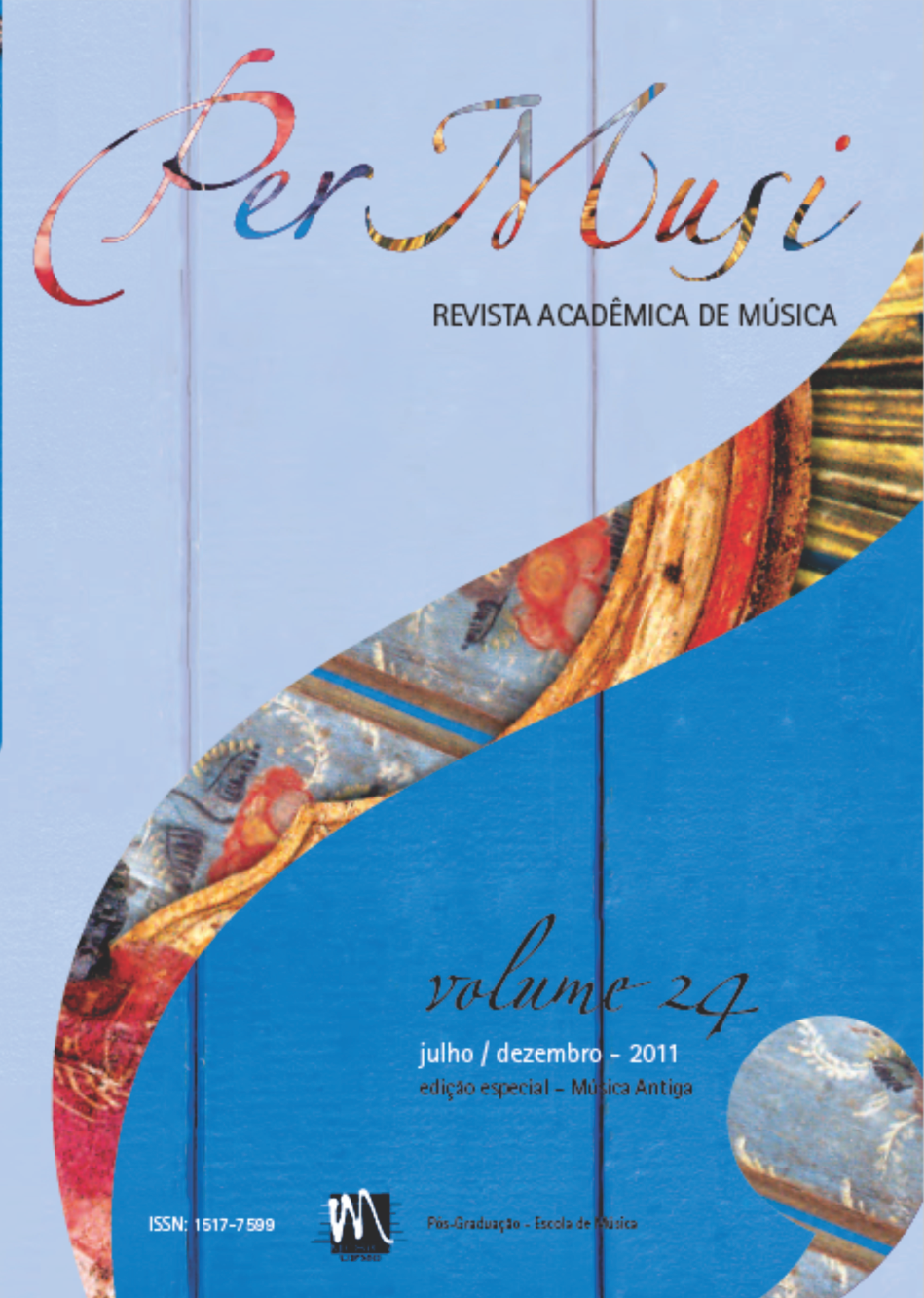Por uma gramática aplicada à prática sonora cravística
duas vertentes nacionais para a compreensão do estilo nas execuções
Palavras-chave:
Gramática aplicada, Cravo, Estilo nacional no século XVIIIResumo
Este artigo centra-se no processo da construção instrumental e na teoria aplicada à prática de execução, advinda do processo de difusão dos conhecimentos históricos por meio dos tratados de época em tempos recentes, aliando ainda elementos específicos significativos: partitura (Les Bergeries F. Couperin) e instrumentos musicais (cravos: francês e alemão do século XVIII), para a recuperação do estilo nacional.
Referências
BACH, Carl Philipp Emanuel. Versuch über die wahre Art das Clavier zu spielen. Berlim 1753. Leipzig: Breitkopf & Härtel, 1969.
BADURA-SKODA, Paul. Interpreting Bach at the Keyboard. Oxford: Clarendon Press., 2002.
COUPERIN, François. L’Art de toucher le Clavecin Paris, 1716 e 17. Ed. Fac-similar.
FORKEL, Johann Nikolaus. Über Johann Sebastian Bachs Leben, Kunst, und Kunstwerke. Leipzig: 1802. Reimpressão: Kassel: Bärenreiter-Verlag, 1968. Tradução inglesa por David and Mendel.
HAASE, Gesine und Dieter Krickeberg. Tasteninstrumenten. Berlim: Staatliches Institut für Musikforschung, 1981.
JARRY, Madeleine. Chinoiserie. Chinese Influence on European Decorative Art, 17th and 18th Centuries. Translated by Gail Mangold-Vine. New York: The Vendome Press, 1981.
MARPURG, Friedrich Wilhelm. Die Kunst das Clavier zu spielen. Berlim: Houde und Spener. 1755 e 1762. Cópia fac-similar.
NEWMANN, Sidney and Peter WILLIAMS. The Russell Collection of Early Keyboard Instruments. Edinburgh: Edinburgh University Press, 1968.
QUANTZ, Johann Joachim. On Playing the Flute. Translated by Edward R. Reilly. London: Faber and Faber, 1976.
RAMEAU, Jean-Philippe. De la Méchanique des doigts sur le clavecin. Paris, 1724. Ed. Facsimilar.
RASE, Horst & DROYSEN-REBER, Dagmar. Kielklaviere. Berlim: Staatliches Institut für Musikforschung, 1991.
RUSSELL, Raymond. The harpsichord since 1800. In Proceedings of the Royal Musical Association. 1955-6. p.61.
TÜRK, Daniel Gottlob. Klavierschule oder Anweisung zum Klavierspielen für Lehrer und Lehrnende. Leipzig: 1798. R. H. Haggh: School of Clavier Playing, University of Nebraska, 1982.
Downloads
Publicado
Edição
Seção
Licença

Este trabalho está licenciado sob uma licença Creative Commons Attribution 4.0 International License.

Exceto onde está indicado, o conteúdo neste site está sob uma Licença Creative Commons - Atribuição 4.0 Internacional.












